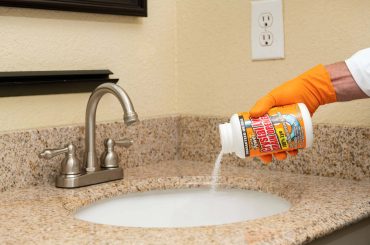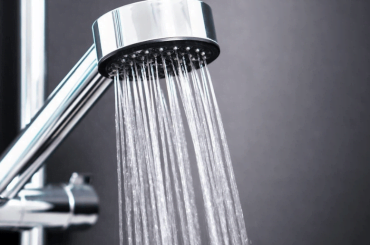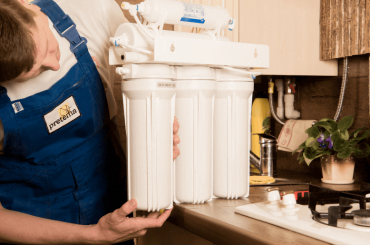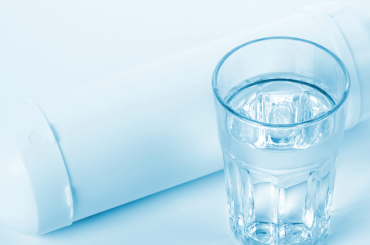We all know that water is essential to our survival. Not only do we need it to drink, but we also need it to bathe and cleanse our bodies.
So, what happens when the water that comes out of our taps is brown instead of clear? Is it safe to use? Let’s take a closer look at brown water and find out.
In this blog post, we’ll discuss what causes brown water and whether or not it’s safe to consume. We’ll also look at ways you can fix the issue and keep your water supply clean and safe to use.
Is Brown Water Safe to Bathe in?
When it comes to bathing and showering, brown water does not pose a health risk. In most cases, the discolouration is simply caused by rust or sediment in your pipes. This can be easily resolved with a filter system, so you don’t need to worry about using the water for washing yourself or your clothes.
However, if your water has an unusual odour or taste, it could be a sign of something more serious. In that case, you should have it tested by a professional to determine the cause and take action accordingly.
If the brown water is caused by iron or manganese in your pipes, you may need to install an appropriate filter system to ensure safe bathing and showering.
What causes brown water?
- Iron, Manganese and Sulfur: Iron, manganese and sulfur are some of the most common sources of brown water in a plumbing system. The presence of these minerals can cause the water to change color from its normal clear state.
- Poorly Maintained Water Heater: If your water heater has been neglected for too long without proper maintenance or replacement parts, it could lead to rust particles developing in the tank and entering the plumbing system which will turn your water brown.
- Ageing Pipes: Over time pipes that have aged beyond their lifespan can start to corrode and leach iron into the water supply causing it to become discolored.
- Corrosive Water: Extremely hard water or acidic water can also turn your tap water brown due to the high amount of dissolved minerals in it.
- Sediment: If there is sediment buildup inside of your pipes, it can be stirred up by running the faucet and cause the water to become murky or even brown.
- Rusting Pipe Connections: Rusty pipe connections can also cause brown water as rust particles make their way into the plumbing system using the faucet.
- Leaky Pipes: Leaky pipes are another source of rusty particles getting into the plumbing system which causes discoloured water to come out from your taps.
- City Water System: If your city’s water system has not been serviced in a while, it could cause the pipes to become clogged with rust and other contaminants. The decaying plumbing infrastructure can lead to brown or discolored water coming out from your taps.
- External Contamination: External contamination such as agricultural runoff or contamination from nearby industry can also contribute to brown water if it gets into the water supply system.
- Bacteria: Bacterial growth in the plumbing system can cause brownish or yellow-tinged water to come out from your faucets which indicates an unhealthy level of bacterial presence within the piping system.
- Filtration System Malfunction: Malfunctioning filtration systems can also lead to discoloured water due to the presence of pollutants and contaminants that were not removed from the water supply.
How to tell if your water is safe to bathe in?
Water safety is an important consideration for any household. If you suspect that your water may not be safe to use, there are several steps you can take to check its safety before taking a bath or shower.
The first step is to determine if your home has a private well system or whether it gets its water from a public water supply. If your home has a private well, it’s important to test the water quality regularly and make sure that all necessary maintenance is done properly.
You should also ensure that you have proper filtration systems installed to remove potential contaminants like bacteria, parasites, lead and other chemicals.
If your home receives its water from a public supply, then you should contact the local health department to find out the latest information on its water quality.
They can provide you with testing results and advice on what type of filtration or treatment may be necessary.
When in doubt, it’s always best to err on the side of caution and avoid using any water that you suspect may not be safe for bathing or showering. Instead, consider boiling your drinking water or using bottled water until you are sure it is safe to use.
Finally, if at any point during your bath or shower you start to feel any skin irritation, eye irritation, headaches, nausea, dizziness or other symptoms then immediately discontinue the use of the water and contact an expert for further advice.
By following these steps you can make sure that your bathwater is safe for use.
What you can do if your water is not safe to bathe in?
If your water is not safe to bathe in, there are a few things you can do.
- First and foremost, contact your local health department or water authority to determine the source of the contamination. They can provide you with more information and guidance on what steps to take next.
- In some cases, boiling the water for at least one minute may make it safe for bathing. However, this should only be done if instructed by a qualified professional. You may also consider installing a whole house filtration system that will filter out any contaminants from your shower and bathwater before it reaches you.
- Finally, if your home’s water supply is contaminated beyond repair, purchasing bottled water for bathing purposes might be necessary.
However, this should be used as a last resort. If you have any questions or concerns about your water safety, contact your local health department or water authority for more information and guidance.
Doing so is the best way to ensure your safety and maintain the health of your family.
How often you should test your water for safety?
Testing your water for safety should be done depending on the source and quality of your water. If you receive your water from a public or municipal source, it should be regularly tested by the water department to ensure that it meets state and federal standards.
However, if you have a private well or septic system or rely on alternative sources of water such as rainwater collection or surface runoff, then testing more frequently is recommended.
A general guideline for how often you should test is every two to three years depending on the type of contaminants in your area. Additionally, you may want to test sooner if changes in taste or odour occur in your drinking water between normal testing cycles.
It’s also important to consult local regulations about what types of tests are required and how often they should be done.
By testing your water regularly, you can ensure the safety of your drinking water and protect yourself and your family from harmful contaminants. Ultimately, it is important to be aware of the possible contaminants in your drinking water and understand how frequently testing should occur.
Taking these steps can help ensure that you and your family have safe, clean drinking water for years to come.
Health risks associated with bathing in brown water?
The health risks associated with bathing in brown water can be serious and include the following:
- Skin infections, such as hot tub folliculitis, occur when Pseudomonas bacteria enter the skin through broken or damaged hair follicles.
- Eye irritation is caused by chlorine or other chemicals used to treat the water.
- Gastrointestinal problems due to ingesting contaminated water, which can lead to vomiting, diarrhoea and cramping.
- Respiratory issues if too much chlorine is present in the water and inhaled while showering or bathing.
- Mould growth in places where moisture from brown water evaporates on surfaces leads to allergies and other health concerns for people with respiratory problems.
- An increased risk of developing Legionnaire’s disease due to the presence of certain bacteria in brown water.
- The possibility of ingesting lead, which can be found in older pipes and plumbing systems, is present in the water supply.
These are just some of the health risks associated with bathing in brown water and it is important to take all necessary precautions when using this type of water for bathing or showering purposes.
If you think your home has a problem with brown water, contact a professional plumber to assess the situation and make any necessary repairs or replacements.
Also, consider installing an ultraviolet light system that helps eliminate harmful bacteria from drinking water supplies. It’s also wise to use bottled water for drinking, cooking and brushing your teeth.
Taking these steps can help to reduce the risk of health issues associated with brown water.
FAQs – Is Brown Water Safe to Bathe in
Can rusty water make you sick?
Yes, rusty water can make you sick if it contains harmful bacteria and other pathogens that can lead to serious health issues when ingested. It is important to contact a professional plumber if you think your home has an issue with brown water.
Why is my bath water brown and yellow?
If your bath water is brown and yellow, it’s likely due to iron deposits from hard water in your home. Hard water contains elevated levels of minerals such as calcium and magnesium, which can accumulate on pipes and fixtures throughout the house.
When these minerals build up in the bathtub, they may cause a discolouration in the water that appears brown or yellow.
Can rust poison your body?
No, rust itself is not toxic and cannot directly poison your body. However, it can cause harm if ingested in large amounts or if the particles are inhaled into the lungs.
Additionally, some forms of rust contain hazardous materials such as lead or chromium which can be dangerous to ingest.
Rust has a tendency to corrode other metals that may have been added to food products, like cans and jars.
Can you get tetanus from rust in the shower?
No, you cannot get tetanus from rust in the shower. Tetanus is caused by a bacteria called Clostridium tetani, which is found in soil, dust and animal faeces.
It can enter the body through cuts or puncture wounds, but it cannot be contracted from rust in the shower.
Wrap Up
Yes, brown water is safe to bathe in. However, there are a few things you should keep in mind if the water has a strong smell or your skin feels irritated after bathing.
However, it’s always a good idea to check with your local water authority to see if there are any specific guidelines or regulations that you need to follow.





